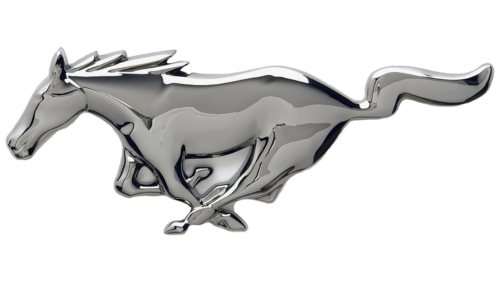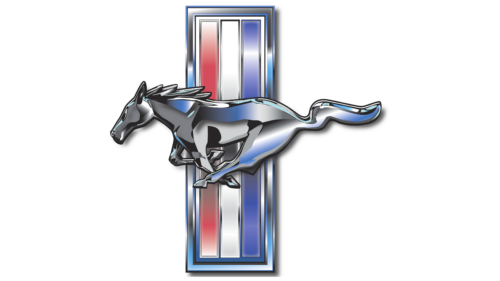The Ford Mustang logo and name are precisely the aspects that have influenced the brand’s success. A series of cars with the image of a galloping horse on the radiator grill became famous worldwide. After all, a running horse is a symbol of energy, movement, strength, endurance, and great speed.
Ford Mustang: Brand Overview
Meaning and History
It is believed that the name “Mustang” came up with John Najjar, who got a job as a designer at the Ford Motor Company and worked on the Ford Mustang I concept car. When choosing the name for the prototype car, he was inspired by his favorite North American Aviation P-51 Mustang fighter, which America used during military conflicts in the middle of the 20th century. According to another version, the first name for the brand of cars was proposed by Robert J. Eggert, a breeder of quarterhorse horses. Rumor has it that his wife gave him the book “The Mustangs,” written by American folklorist J- Frank Dobie, ultimately inspiring him.
The Ford Mustang I concept car had nothing to do with the production of the Ford Mustang because it was developed in parallel and was still nameless at that time. The emblem of the prototype was not drawn by John Najjar but by another automotive designer, Philip Thomas Clark. He depicted the dark silhouette of a horse running to the left at an angle. But in the end, another brand concept won the competition, so the new model was named Cougar and received the corresponding logo.
What is Ford Mustang?
The Ford Mustang is a “long-liver” among all Ford production cars. It has been in continuous production since 1964 and debuted on the race track the same year. There are models with several body options: convertible, fastback, hatchback, and coupe. These are all muscle cars, pony cars (in America), and sports roadsters (in Europe).
Later, Ford employees decided to continue the horse theme. They began experimenting with the emblem, turning it in different directions, and even tried stylizing the horse’s head as a chess piece. The final logo design was adopted and embodied in a wood carving by Charles Keresztes and Waino Kangas. The new version of the badge was intended for the 1963 Ford Mustang II concept car, which had just entered series production the following year. The company’s designers flattened the 3D horse figurine to fit on the car’s sides and decorate the gas cap at the back. The first version of the running horse differed markedly from the current one due to the shape of the head and tail. The symbol was redesigned 2010 to be more stylized like the original wood figurine.
As a result of a long evolution, the Ford Mustang logo has acquired a recognizable design. Now, it is an elegant silhouette of a graceful horse running to the left. Her tail and mane flutter due to her high speed, her ears are raised, and her neck is leveled horizontally to give confidence and purpose. The muscles and powerful legs of the animal are also depicted in detail. The silver version of the badge, with shading, highlights, and a gradient, is reminiscent of the figurine used on cars.
Obviously, with the help of the image of a running horse, the designers decided to play with the brand’s name. At the same time, the horse on the Ford Mustang emblem symbolizes strength and endurance. And it is also a demonstration of the unprecedented speed that cars are gaining and a confirmation of their reliability. On the other hand, the logo embodies the brand’s homeland because the Mustang is a feral horse from the prairies of North America.
Font and Colors
The emblem with the image of a horse is usually not supplemented with inscriptions. But the Ford Mustang has a wordmark – the name of the car series, decorated in a custom bold sans-serif. The brand badge is stylized as a metal figurine used to decorate the bumper. Because of this, it has a silvery gradient with uneven highlights and shadows, creating a three-dimensional effect.





